Select a Gauge Size
Looking for the perfect fit? Check Out These Best-Selling Gauge Jewelry.
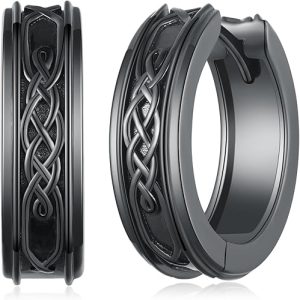
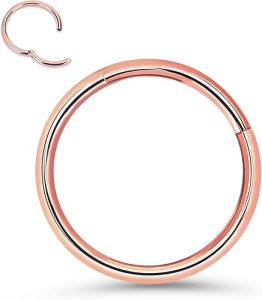
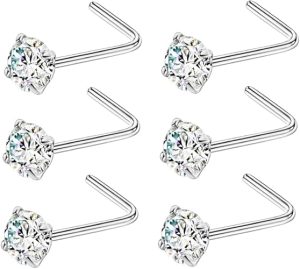
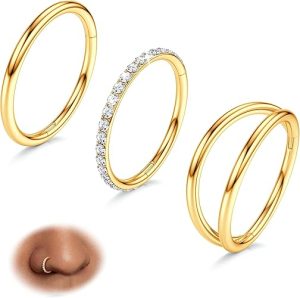
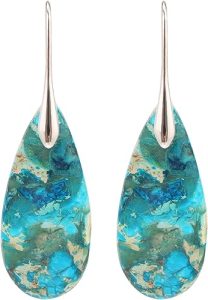
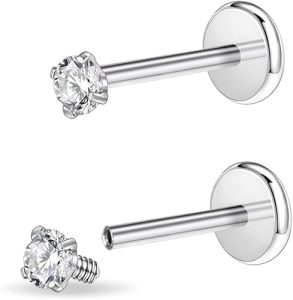
Gauge Size Chart – Understanding Gauge Sizes for Jewelry, Body Piercings, and More
Gauge size is a critical measurement when it comes to jewelry and body piercings. Whether you are considering getting a piercing, need to understand the wire gauge for DIY crafts, or are simply looking to buy jewelry that fits just right, understanding the gauge size chart is essential. We’ll walk you through everything you need to know about gauge sizes and provide a detailed gauge size chart to help you select the correct size for your needs.
What is Gauge Size?
The term gauge refers to the thickness or diameter of various materials, including jewelry wires, body jewelry, and even tools like needles or wire for crafting. The gauge system is commonly used in the United States, and it works inversely—the larger the number, the smaller the gauge. This is a bit counterintuitive, but it is essential to remember when shopping for items that require precise measurements.
For example:
- 16 gauge is thicker than 18 gauge but thinner than 14 gauge.
- 14 gauge is commonly used in body piercings for larger piercings like those in the septum or cartilage, while 18 gauge is more typical for ear lobes.
The Importance of Knowing Gauge Size
Gauge size plays a vital role in making sure that jewelry, body piercings, and wires fit comfortably and securely. Whether you’re getting your first body piercing or purchasing jewelry for an existing one, knowing your correct gauge ensures:
- Comfort: A properly sized piece of jewelry won’t cause unnecessary pressure, irritation, or injury.
- Fit: If you buy jewelry that’s too small or too large for your gauge, it might not fit, or it could stretch or damage your piercing.
- Healing: Piercings need the right gauge size to heal properly. Using the wrong size could slow healing or even cause infections.
Gauge Sizes for Jewelry and Piercings: A Detailed Breakdown
When discussing gauge sizes, it’s important to know that the sizing is applicable in different contexts, like ear piercings, nose piercings, lip piercings, and even body jewelry like tongue rings or eyebrow piercings.
1. Jewelry Gauge Sizes
Jewelry gauges are typically used for ear piercings, nose piercings, and other body piercings. The most common gauges for jewelry range from small sizes like 20 gauge to much larger sizes like 00 gauge. These sizes refer to the diameter of the jewelry or the thickness of the post that fits into the piercing.
Common Piercing Gauge Sizes:
- 20 gauge: Thin, often used for eyebrow, lip, and nostril piercings.
- 18 gauge: Standard for nostrils and earlobes.
- 16 gauge: Slightly larger than 18 gauge, used for cartilage piercings and some earlobe piercings.
- 14 gauge: Popular for lip and septum piercings, as well as stretched ear lobes.
- 12 gauge: Often used for larger piercings in ears, such as stretched lobes.
- 10 gauge: Larger gauge, typically used for stretched ear piercings.
- 8 gauge: Common for thicker or stretched ear piercings.
- 6 gauge and below: These sizes are typically used for very stretched piercings and tunnels.
Gauge Size Chart: Jewelry, Body Piercings, and More
Here is a detailed gauge size chart for body piercings, ear gauges, and wire gauge for reference.
Jewelry and Body Piercing Gauge Size Chart
| Gauge | Diameter in Millimeters (mm) | Diameter in Inches (in) | Common Uses |
|---|---|---|---|
| 20 gauge | 0.8 mm | 0.031 in | Small nostril piercings, eyebrow, lip piercings |
| 18 gauge | 1.0 mm | 0.039 in | Nose piercings, standard ear lobe piercings |
| 16 gauge | 1.2 mm | 0.047 in | Cartilage, helix, and tragus piercings |
| 14 gauge | 1.6 mm | 0.063 in | Septum, lip piercings, stretched earlobes |
| 12 gauge | 2.0 mm | 0.079 in | Stretching ear piercings, eyebrow piercings |
| 10 gauge | 2.5 mm | 0.098 in | Stretched ear piercings, industrial piercings |
| 8 gauge | 3.2 mm | 0.126 in | Heavy ear gauges, larger piercings |
| 6 gauge | 4.0 mm | 0.157 in | Stretched ear piercings, large body jewelry |
| 4 gauge | 5.0 mm | 0.197 in | Very large ear piercings, tunnels |
| 2 gauge | 6.0 mm | 0.236 in | Ear stretching, large body jewelry |
| 0 gauge | 8.0 mm | 0.315 in | Ear stretching, plugs, and tunnels |
| 00 gauge | 10.0 mm | 0.394 in | Larger stretched ear piercings |
| 1/2 inch (00) | 12.7 mm | 0.5 in | High body jewelry, tunnels, plugs |
| 9/16 inch | 14.0 mm | 0.551 in | Larger body jewelry, ear plugs |
| 5/8 inch | 16.0 mm | 0.629 in | Large plugs, body jewelry |
| 3/4 inch | 19.0 mm | 0.748 in | Heavy body jewelry, stretched piercings |
Note: The measurements for larger gauges are especially important when stretching your ears. A gauge size that’s too large for your ear can lead to tearing or other damage. Always consult with a professional before attempting to stretch your piercings to a larger size.
How to Choose the Right Gauge Size for Your Piercing
Choosing the right gauge size for your piercing is essential to ensure comfort and longevity. When making your decision, consider the following factors:
1. Current Piercing Size
If you’re getting a new piercing, the piercer will typically use a standard size, often 18 gauge or 20 gauge for nose piercings, and 16 gauge for cartilage piercings. You should always check with your piercer to make sure the gauge size is appropriate for your body and desired piercing.
2. Stretching Your Piercing
If you’re looking to stretch an existing piercing (commonly in the ear), it’s important to go slow and follow proper aftercare guidelines. Stretching too quickly can lead to tearing, infection, and other complications. You’ll need to gradually increase the gauge size, typically by 1-2 sizes at a time.
3. Comfort
Gauge sizes that are too large may feel uncomfortable in your piercing, while those that are too small may cause irritation and inflammation. Always choose a size that fits snugly without causing discomfort.
4. Jewelry Material
The material of the jewelry also affects how well it fits and heals in your piercing. Materials such as titanium, surgical steel, or bioflex are commonly used for piercing jewelry because they’re less likely to cause an allergic reaction or infection.
5. Desired Style
Your aesthetic preferences may also guide your choice of gauge size. Larger gauges (e.g., 00 gauge or 1/2 inch) are often used for bold styles and are typically seen in ear gauges, tunnels, and plugs, while smaller gauges (20, 18, 16 gauge) are popular for more subtle piercings.
Other Applications for Gauge Size
Besides jewelry and piercings, the gauge size system is also used in wires and tools for various crafts. Here’s how gauge sizes are applied:
1. Wire Gauge for Jewelry Making
In jewelry making, wire gauge is essential to determine how thick or thin the wire is. The lower the number, the thicker the wire. Common sizes for wire gauge range from 12 gauge (thick) to 28 gauge (thin).
2. Needle Gauge
For medical purposes (like injections or tattoos), needle gauge sizes are also measured using the same system. Smaller gauge needles (e.g., 18 gauge) are used for blood draws, while larger needles (e.g., 22 gauge) are used for vaccinations.
Tips for Buying Jewelry or Body Piercing Jewelry:
- Always ensure that the jewelry material is safe for your skin and piercing type (e.g., nickel-free, hypoallergenic).
- When in doubt, consult with a professional piercer to ensure that your gauge size choice is safe for your body and your healing process.
- For ear gauges and piercings, consider going up one size at a time if you are stretching your ears to avoid complications.
- Lastly, always remember that comfort is key—whether it’s for a new piercing or jewelry!
With this gauge size chart and helpful tips, you’ll be well on your way to choosing the perfect size for your body piercings, jewelry, and more. Happy shopping and good luck with your piercing journey!
Final Thoughts on Gauge Size
Whether you’re a piercing enthusiast, a craftsman, or just curious about how gauge sizes work, understanding the system is key to making informed decisions when it comes to purchasing jewelry, body jewelry, and supplies. The gauge size chart we provided above should serve as an essential guide for selecting the right size for your needs.
